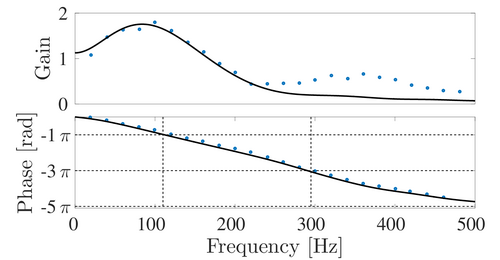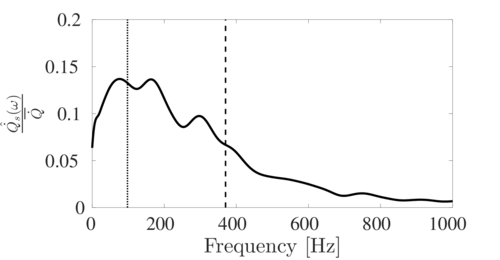LES/SI to assess simultaneously both the flame acoustic response and combustion noise
by Camilo Silva, Malte Merk and Wolfgang Polifke
Motivation
In totally premixed combustion, the flame responds primarily to upstream fluctuations of velocity. In experiments and numerical simulations, this response is generally evaluated by imposing external acoustic fluctuations and subsequently measuring perturbations of velocity at a reference point upstream of the flame, together with the global heat release rate radiated by the flame. Contrary to experiments, numerical simulations are specially suited to time domain analysis of the flame response. This is due to the richness of information contained in the extracted data once a well designed and controlled broadband acoustic excitation is imposed. As a result, the impulse response of the flame can be assessed by performing correlation analysis of input (velocity fluctuations) and output (global heat release rate). The quality of the estimated impulse response, and therefore the quality of the flame dynamics model, highly depends on the System Identification (SI) methodology implemented and on the levels of noise present in the system. A reliable model of the flame dynamics is crucial for the study of combustion instabilities. When the system under study exhibits no noise, modeling the deterministic part of the system (plant) is enough for a reliable identification. In turbulent flames, nevertheless, this is not the case because combustion noise is present. Accordingly, modeling the noise becomes crucial. This is the framework of this project. It consists in efficiently combining Large Eddy Simulation (LES) with SI to retrieve in one simulation the impulse response of the flame together with the corresponding combustion noise present in the identified system. Generally, noise produced by turbulent flames is present at low-frequency bands (0-3000 Hz, say) and exhibits a non-uniform spectral distribution. Polynomial models, such as Box-Jenkins, have proved to be very suitable for the concurrent identification of flame response and noise of turbulent combustion.

